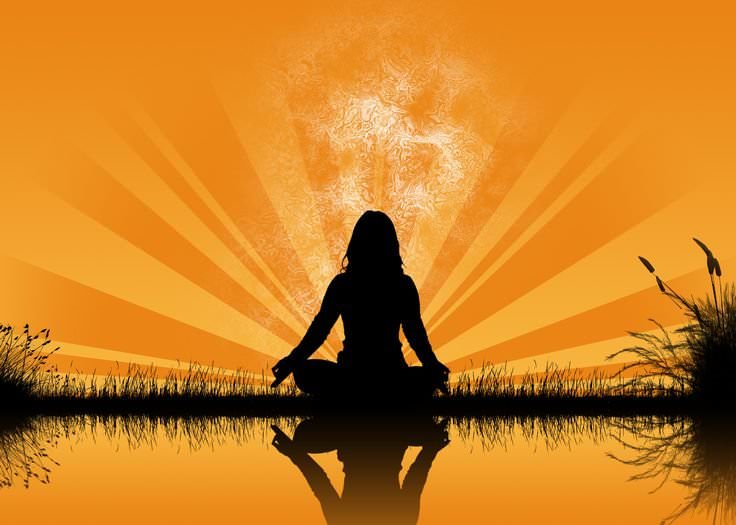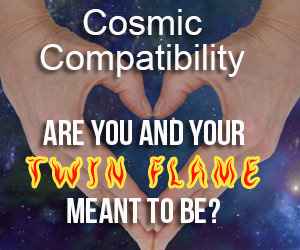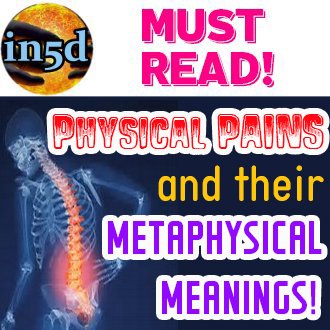How To Develop The Four Primary Skills Of All Meditation
by Paul Cavel
Emancipation or freedom from slavery and bondage is ultimately what the human spirit craves. From the perspective of your spirit, slavery encompasses how the attachments in your life—such as sex, material items, money, power and all that they bring—prevent you from being free. Bondage has to do with the ways in which your ego (or collection of identities) and your karmic loops bind you into the reality you experience, and thereby limit your human growth. So the question is: How can you free your spirit and, in so doing, realise your human potential?
Donate to In5D
With over 6,000+ free articles and 1,200+ free videos, any donation would be greatly appreciated!
Much love for your kind donation,
Gregg
Making The Body Conscious
In Taoism, whether you meditate for your health, stress relief, high-performance goals or more lofty spiritual pursuits, the journey commences by progressively and systematically making the body conscious. This awakening process must be developed to a relatively high degree in order to engage the middle ground of meditation, where a lot more emotional and mental stability is required. During every micro-step of the process, four primary skills form the foundation of all more advanced meditation practices, whether Taoist or any other genuine form of meditation. Using a pragmatic strategy, anyone can learn how to meditate, or hone, refine and boost the effectiveness of their current practice.
The Four Primary Skills
The four primary skills that enable all forms of meditation are:
- Presence—the ability to be in the here and now;
- Awareness—the ability to be conscious of what is;
- Focus—that which guides and directs your awareness;
- Concentration—that ability to stay on point and thereby generate a continuum of unified consciousness (at least to some degree).
Becoming Present
Your ability to use meditation as a tool to create change is governed by the quality of your practice; and that quality is governed by your ability to be present. Presence is the underlying structure that supports the higher and far more subtle methods of meditation. When you meditate for one hour, you may actually only be present for five minutes—possibly more, maybe less. Although whatever you are present to in meditation and for how long governs the potential outcome of your effort.
By definition, authentic masters (an entitlement that has become utterly thrashed and thoroughly exploited in the West) are capable of being continuously present and therefore can very powerfully affect the subject of their attention. Beginners (which we all are to varying degrees unless or until we become masters) drift in and out of consciousness, creating an intermittent, peek-a-boo experience. If we compare this waxing and waning presence to the accelerator of an airplane on the runway, the aircraft would never take flight as the engine revs would not produce enough thrust or speed.
In meditation practice, each stage of your development requires ever-more subtle levels of presence to energy. You start by becoming present to your body, but soon delve into the emotional and mental realms within yourself. That’s all fine and well, but awakening to the emotional and mental debris encrusted in your body can create a rollercoaster ride for the mind, causing dissociation—the opposite of being present. There’s no question that it can be challenging to remain present when the mind encounters the emotional and/or mental realms of either the past (e.g. memories, traumas or analysis), or the future (e.g. hopes, fears or planning).
When these energetically or emotionally charged, stored energies in the body are contacted, often times the mind swings like a pendulum between the past and future. So you need an anchor, a focal point on which to focus your mind and stay in the present moment: your physical body. Keeping the mind firmly rooted in the physical body allows the release of emotional-mental energies that have become trapped in the flesh—without the need to journey with them. This is why Water tradition Taoists pay so much credence to making the body conscious.
Expanding Your Awareness
Awareness is born out of presence. Once your ability to stay present is developed to a reasonable degree, you can become more consistently aware. Awareness of what is happening in any given moment may seem like a very basic function of the mind, but many people are becoming progressively more disconnected from their body, emotions and state of being—to the point of an epidemic. Almost everything in modern Western cultures creates dissociation from the body and other levels of our being—from drugs (whether pharmaceutical, legal or narcotics), information technology, entertainment, food (if you can call much of what is available food) to the impersonal ways we interact with our fellow human beings on a daily basis.
Awareness of what is sets the foundation for change, and creates the momentum necessary to enter into the realms of actually resolving the issues you encounter. Just try being aware while you’re spacing out… If you are not aware of any particular state, you cannot change that state. This is why acceptance is an important stage in all healing programs. For example, until someone recognizes that they are an alcoholic—i.e. becomes aware of their repeating behavioral pattern—they can do little to change the status quo.
When you focus your mind on any body part, energy and blood are drawn to that place. Energy follows the mind’s intent; and blood follows energy. With increased energy and blood flow, the focal point is flooded with life-sustaining energy and nutrients, which, together, upgrade the felt sensations in that localized area. With this heightened awareness, we can more easily feel deeper into the more subtle sensations in this space—that which is under the surface, not only the gross.
Feeling into your body not only changes your experience of your body, but allows you to go deeper into your being, especially into the emotional and mental realms. From there, you can begin the process of recognizing your emotional and mental states. This awareness is what enables you to eventually let go of all that is negative or life- diminishing. (Of course this says nothing about whether the process will be easy or hard.)
In the beginning stages, simply recognizing what is negative or detrimental to your development and having the willingness to let it go—whatever “it” is— can be enough to send you down the path that aligns with your deeper desires and aspirations.
Directing Your Focus
Focus guides your presence and awareness to a particular subject of your choice. As your mind becomes increasingly more present and aware through regular and ongoing practice, your ability to focus will also improve. Initially, you develop hard or laser focus, where progressive degrees of your mind are gathered into one stream and can then be applied to remove blockages in your body. You could think of sun rays being refined into a thin beam by a magnifying glass. The sun itself is not strong enough to ignite dry tinder, but through the magnifying glass you can amplify the intensity of the heat to the point that it does. When the mind is floating or dissociating, you will miss any opportunity to create change; conversely, when your mind is present, aware and focused, you can. Over time and with practice, your focus can transform from a hard laser-like type to a soft, relaxed type.
To make the shift to a softer focus, you must develop your ability to draw more and more of your mind into one stream of consciousness and become comfortable in this focused state. As you relax into the experience, you can more easily maintain it and stop the mind from segmenting. Initially, all your effort is required to gather your mind and focus, but with relaxed persistence you may soon find that you can sustain a gathered and focused mind with little effort, and eventually without any effort.
Creating a Stream of Concentration
Concentration is the means by which your focus can stay on point and be continuous. The degree to which you can concentrate determines the results you will gain from your meditation practice or any undertaking in life. Concentration by force of will can only be achieved in short bursts since it creates strain that inevitably causes stress under which the concentration breaks. Therefore, the softer your approach, the better the results. Yet if your focus is not sufficiently developed, then you will drift in and out: good ole spacing out. So in order to generate a stream of continuous concentration (one of the early definitions of meditation), you must develop focus:
- Focus arises from awareness;
- Awareness arises from presence.
Cyclical Learning
In Tao arts learning occurs in a cyclical rather than linear progression and, as any meditator knows, developing skill in more sophisticated practices is driven by the course of your growth. You cannot fully and completely develop one aspect of meditation, in body, mind or energy, without all other skills being developed in tandem.
- You begin with presence practices and train them to a certain degree—not to the point of perfection (which isn’t possible anyway), but until you can clearly identify some level of progress.
- Then, you continue around the circle to awareness practices, next to developing your focus and finally to your ability to concentrate.
- When you revisit presence practices, your ability to be aware, to focus and to concentrate has also grown, and can amplify and deepen your ability to be ever-more present.
It is impossible to completely separate the four primary skills as they are intrinsically linked. So by engaging or paying attention to one, you will automatically engage all others to some degree.
In Lao Tzu’s meditation tradition, the practitioner works around the circle time and time again, slowly sinking deeper into the depths of their mind and being with each revolution. However, the depth you achieve is not governed by the practices themselves, but rather by your patience and stamina from training regularly over time.
About the Author: Paul Cavel is the founder of Tao Meditation Arts, a London-based school established to teach the philosophy and secular practices of Taoism’s Water tradition, passed down by Lao Tzu and other lineage masters through time. Since 1987 Paul has studied the I Ching, Five Element Theory and Old Taoism in-depth, including qi gong, tai chi, bagua, yoga, qi gong tui na energy healing and meditation. http://www.circlewalking.com
Image: Pixabay
See EXCLUSIVE In5D videos and ad free articles on Patreon for a minimal donation! https://www.patreon.com/in5d
Follow In5D on Patreon, Telegram, Twitter, Bitchute, TikTok, Instagram, Facebook, YouTube, Gab, and Truth Social @greggprescott 

















